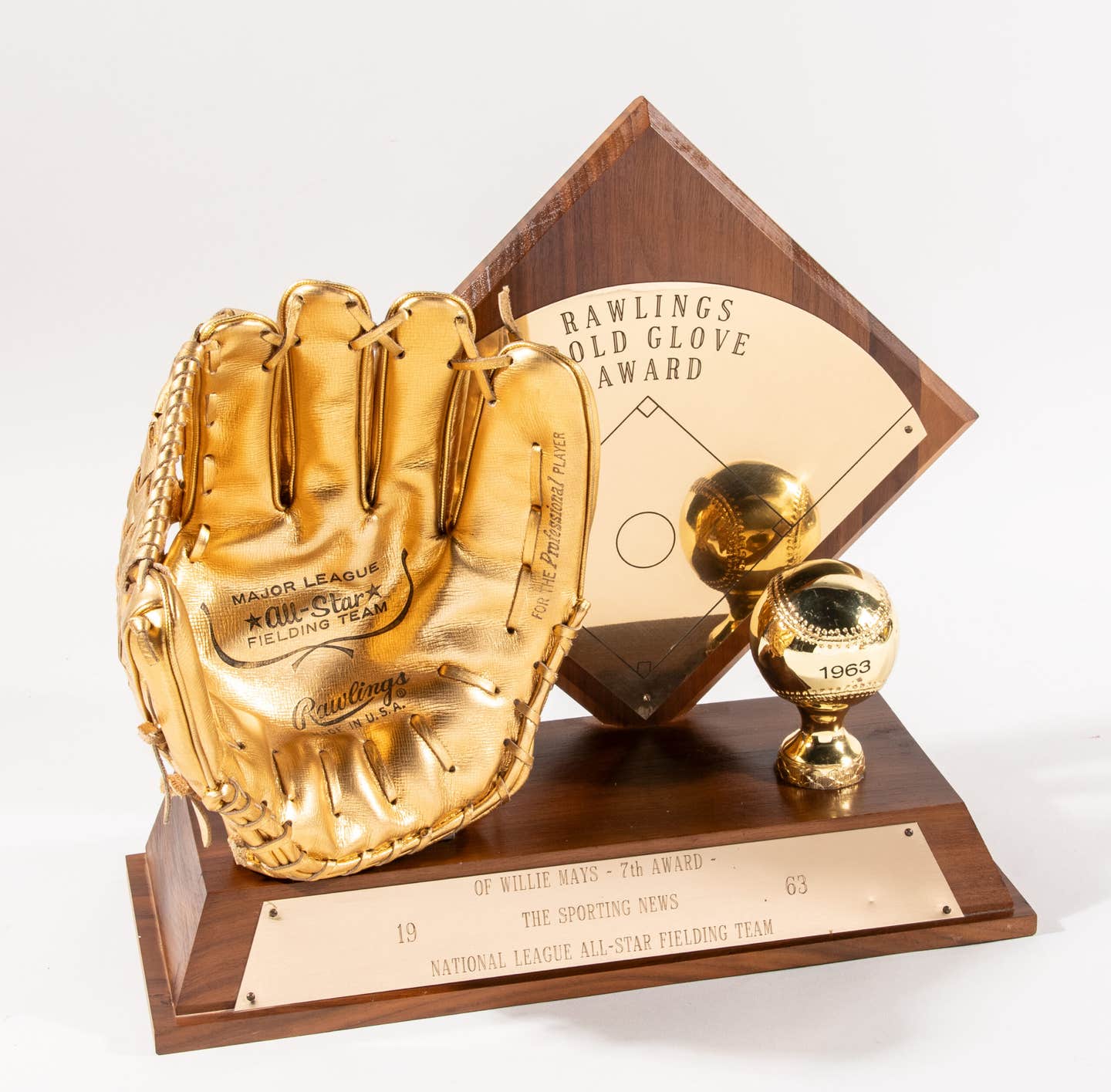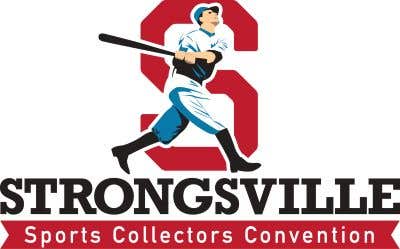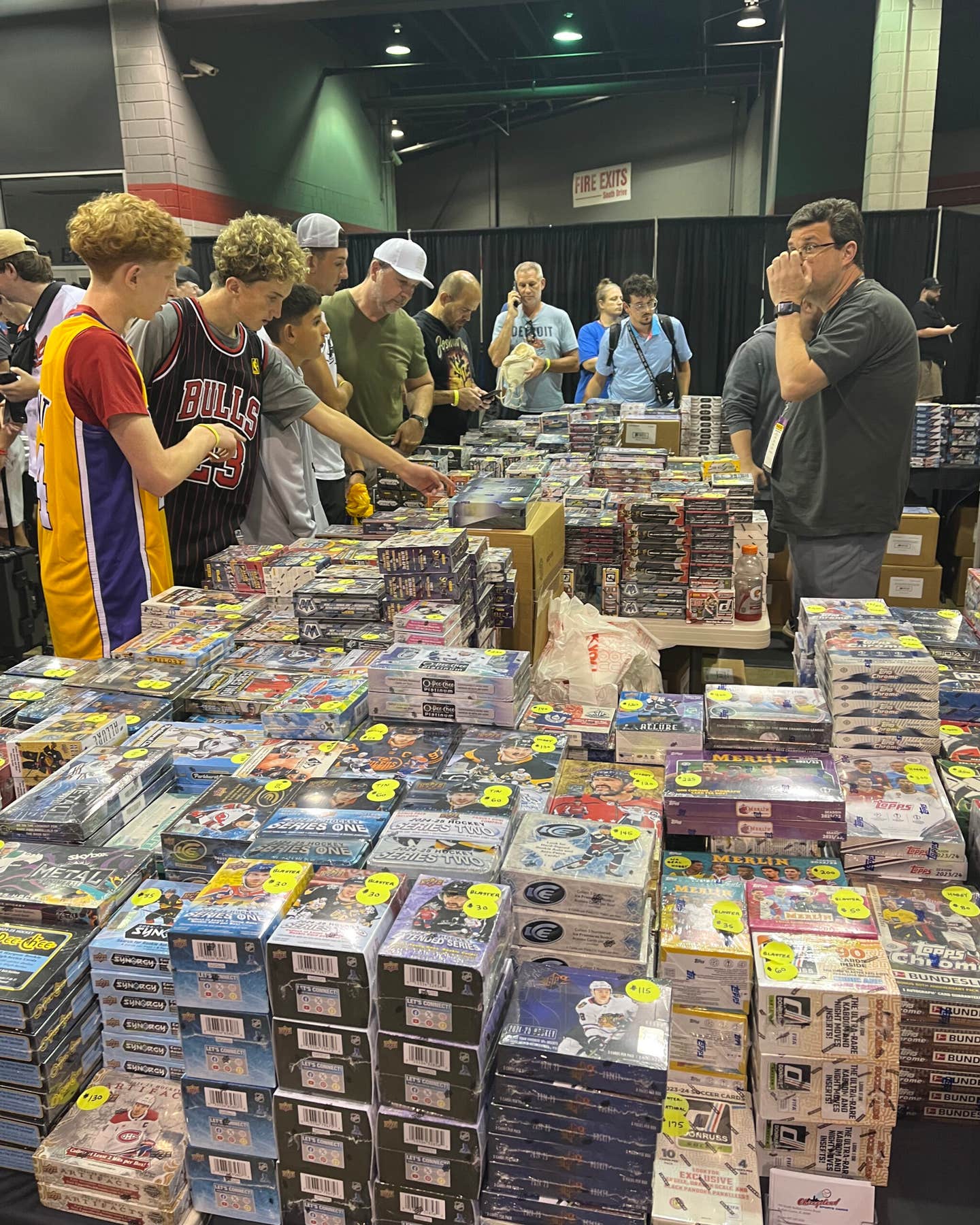News
Ray Hess: Decades of Observation in the Hobby
What was it like collecting baseball cards in the 1930s? What was it like seeing Babe Ruth play? Ray Hess would know – he was there.
On the pioneer wagon train
Ninety-two year-old collector Ray Hess lives in a retirement home in Palm Springs, Calif. He picked his unit number (B3) to remind himself of Babe Ruth, who wore No. 3 for the Yankees. Hess was happy to talk to me about collecting. While he would not rank himself among the hobby pioneers, it sure sounded to me like he was on the same wagon train. He was collecting Batter-Ups and Goudeys in the 1930s. He dealt with hobby pioneers Lionel Carter, Charles Bray, Preston Orem, Buck Barker, Elwood Scharf and Bob Jaspersen. He attended Jim Nowell’s 1970 California convention with Goodie Goldfaden, Irv Lerner and Carter. He attended the early Detroit shows, sold cards and stayed with Frank Nagy. Hess attended hundreds of baseball games, but one game really took the prize – Babe Ruth’s last professional game on May 30, 1935.
The Batter-Ups were first
Hess was at the advanced collecting age of 13 in 1934 when he started collecting Batter-Ups, Goudeys and Diamond Stars. He later added Play Balls and Double-Headers. As with many collectors, his first set – the Batter-Ups – was his favorite. He particularly liked the ability to play baseball games with the cards. He didn’t mind using the die-cut figures minus their backs, which could be glued to small wooden bases. Add a deck of cards, a pool table for a grass-like ballpark, a few like-minded friends, and you had a baseball game with all the stars right in your own basement. Obviously, he didn’t get too concerned about card condition or even completing sets; he just liked baseball cards and playing baseball with his friends at a park near his home.
National Chicle’s Batter-Ups were popular with other young collectors like Lionel Carter (1918-2008) of Colfax, Ill., Harry Lilien (1922-2007) of New York City and Edward Golden of Connecticut, who swapped cards from different series at the time despite being 1,000 miles apart. Hess later traded with Carter, but neither of them ever completed their Batter-Up sets.
The boardwalk and exhibit cards
In summers during the 1930s, Hess would stay with family in Wildwood, N.J., which featured a boardwalk and an amusement park. Like many amusement parks, it had a penny arcade, and Hess went after the ballplayer exhibit cards from the vending machines. He didn’t mind getting a few boxers and movie stars, as well. To this day, the large exhibit cards remind him of summers along the boardwalk in Wildwood.
Collecting restarts with Preston Orem
Hess moved to California in 1941, and the cards came with him. He joined the Navy during World War II and was stationed in Guam until 1946. After the war, he married and started a family of five children; he worked in a grocery store in Palmdale, Calif. Before too long, the collecting bug bit him again, and he found ads for collectors. In the late 1940s, he met attorney Preston Orem, who was a serious collector and subsequent contributor to the American Card Catalog. Hess remembered the well-groomed Orem and his extensive collection housed in several nicely maintained binders. Hess had just a few binders, but was pleasantly surprised when Orem found cards in his collection that he needed. They worked out a trade.
Lionel Carter
Hess found an ad in Grandstand Manager Magazine and started a long exchange of cards with Lionel Carter. He finally met Carter at the 1970 California Jim Nowell gathering. Carter saved everything, and I was fortunate to have read Hess’s letters to Carter. For example, Hess wrote Carter in 1956, “Went up to Phila last Sunday and I’m sorry to say I didn’t contact either (collectors) Jones or DeNardo. I only spent about 5 hours there and most of it was taken up with my folks . . . A funny thing happened when I was there. I thought I might have some old cards lying around somewhere and sure enough I went through the cellar and found some. Some I remember you sending me and the others I picked up around 1935 or so, any way I am going through them and will send you the dupes.”
Topps, Bowmans and Bell Brands
Hess began collecting Bowman and Topps cards as they were issued, and he was never far from a good source of cards working in the grocery store. He began exchanging cards with other collectors by mail. In the 1950s, he would buy cards in the Charles Bray auctions which appeared in Jefferson Burdick’s Card Collector’s Bulletin.
A particularly helpful “find” was obtaining a quantity of Bell Brand cards when they were issued in 1958 and 1962. A helpful grocery store supplier presented Hess with a box of 1958 Bell Brand Dodgers. The cards were meant to be inserted in bags of potato chips (picking up some grease along the way), but these cards were never exposed to the chips. There were 10 cards in the set; the box had 500 Mint cards, but covered only eight of the players (Podres and Cimoli were “single” printed). Nonetheless, the 500 cards of eight players, plus uncut sheets of 1962 Bell Brands, provided a nice way for Hess to pay for trips to Detroit shows and Nationals where he could sell and buy cards. Collectors at shows would call him the Bell Brand man.
Medeiros and Nagy
In 1969, Hess met Ray Medeiros, who had a particular enthusiasm for stadium postcards. Hess credits Medeiros for “showing and teaching him more about cards than any person I’ve ever come in contact with.” For years they traveled together to shows. Medeiros was instrumental in Hess attending the 1970 “National” at Jim Nowell’s house. Hess had traded with Carter and Bob Jaspersen for years, but he met them for the first time at Nowell’s. Hess recalls sitting around in the house all day, “swapping cards, shooting the bull and having dinner together.”
Hess stayed with Frank Nagy when attending shows in Detroit. He thought Frank was a great guy. They would flip through cards in Nagy’s basement late into the evening. Nagy was a generous trader and found cards in Hess’s duplicates that even he needed.
Collecting and then selling
Hess appreciated the work of others in cataloging and describing sets, but he never worried too much about what they were called.
“Ray is the ultimate collector,” said friend Jim Schneider. “It didn’t matter what it was, if he enjoyed it, he collected it.”
Hess branched into publications as well as other sports, accumulating Reach Guides and 1949 Sports Illustrated magazines produced by Dell Publications. He collected Philadelphia material to remind him of his youth. He had tickets, photos, books, bats, postcards, reprints and a considerable collection of what he referred to as odds and ends. He even got into the card explosion of the 1980s and early 1990s before tossing in the towel and deciding to sell his entire card collection. The buyer was long-time friend Don Ortolani, who carted away 27 apple boxes full of Hess’s baseball cards.
Even after selling out, Hess began accumulating cards and memorabilia again.
Recently, Schneider has been selling the remaining items on eBay for Hess. As a result, he doesn’t have much of a collection left, other than the many friends and memories collected during his 80 years in the hobby.
Ray Hess and Babe Ruth's Last Game
Ray Hess grew up in Philadelphia and followed both the Phillies and the A’s. On Memorial Day – Thursday, May 30, 1935 – Hess got together with a few of his buddies. They pooled 25 cents each for the luxury of taking a cab to the Baker Bowl to see the Phillies play a doubleheader. They left early to watch batting practice and see a 40-year-old hitting .183 and playing left field for the visitors, Babe Ruth. Hess watched batting practice from his seat in the lower grandstand and remembered, “Ruth hit at least three balls over the fence in right field, clear out of the park.”
The Baker Bowl was what you might call a band box, shoehorned into an urban site in 1887, and seating only 18,800. The right field wall was a unique piece of baseball history itself. While it was only 280 feet from the line to home and only 300 feet even in right-center, the “Baker Wall” in right field was 60 feet high. In comparison, Fenway’s Green Monster is 310 feet from home but only 37 feet high. A huge ad for Lifebuoy Soap covered the Baker Wall proclaiming, “The Phillies Use Lifebuoy.” A small homemade sign was found attached to the wall one day that went on to add “But the Phillies still stink!”
In the 1930s, Hess remembered that whenever a foul ball bounced off the roof of the grandstand, rust would be dislodged and flake down on the spectators. The Phillies stopped using the dilapidated Baker Bowl after 1938, but it survived as a venue for such activities as midget auto races until 1950.
Ruth joined the Braves in February 1935 following an 18-game tour of (mostly) Japan that didn’t end until December 1934, and the completion of a trip around the world. (See Robert Fitts’ excellent book, Banzai Babe Ruth, for more.) Ruth started the 1935 season for the Braves with a bang, homering in the opener (off Carl Hubbell) and getting four hits in the first two games. He was hitting .400 after five games, but then managed only two hits over the next month. He was hitting .153 when he had the glorious day in Pittsburgh on May 25, 1935, going 4-for-4 with three big homers and six RBIs.
It would have been a great ending had he walked off the field that day like William Bendix or John Goodman did in The Babe Ruth Story or The Babe movies. (Come to think of it, there wasn’t much “great” about either movie, particularly The Babe.) Ruth wanted to quit even earlier than the Pittsburgh game. He wasn’t hitting, his fielding was terrible and the team had just nine wins in 32 games (winding up with a record of 38-115). Additionally, Ruth was supposed to be paid $35,000 for the year and have a chance to manage, but owner Emil Fuchs instead wanted Ruth to invest $50,000 in the team and was only interested in his impact on the gate for an advertised farewell tour. Fuchs asked Ruth to “stick it out for the first Western trip.”
Ruth never had another hit. The day after the three-homer Pittsburgh game, Ruth struck out three times in Cincinnati. The Braves moved on to Philadelphia. Despite the Phillies being the second worst team in the National League that year and the declining skills of Ruth, 15,122 people showed up for the May 30 Philadelphia/Boston doubleheader. The attendance of 15,122 doesn’t sound like much, but the Phillies only drew 205,470 for the year and the park only held 18,800; therefore the turnout was about 7 percent of the entire season’s attendance. The headline in the next day’s paper was “Ruth is Magnet for 15,122 Crowd.”
Still Hess remembered, “You could sit about anywhere at a Phillies game once you were inside the park. There weren’t any ushers around to chase you out of a better seat.” Despite having about 20,000 for their opener and Ruth in the lineup for 14 home games, the Braves didn’t do much better for the season, with home attendance of only 232,754.
Hess wished he could vividly recall the specifics of that game, but he had no idea it would be Ruth’s last. He was rooting for the Phillies. He didn’t recall Ruth doing much at bat in the game, but remembered something about a triple and Ruth leaving the game early. Not surprisingly, the literature on this subject has conflicting information, given the different spins by the press, the team and Ruth himself. A week after the game, Ruth probably didn’t remember exactly what happened either.
The most believable research I found was that Ruth batted against Jim Bivin and grounded weakly to first in the top of the first. He played left field in the bottom of the first, and with the bases loaded, tried to make a shoestring catch (or perhaps knee-high catch) of a soft liner by Lou Chiozza, but missed and the ball rolled to the wall. Braves shortstop Bill Urbanski retrieved the ball, and Chiozza was out trying to stretch the hit into a homer, hence the triple that Hess remembered. At the end of the first, Ruth tucked his glove into his pocket (instead of leaving it on the field, as was the custom) and walked to the visitors’ clubhouse in center field. Ruth told writer Bob Considine he had pulled a charley horse on the (mis)play. The fans gave him a standing ovation.
Hal Lee (who had 33 home runs in his career) replaced Ruth in left field and went 5-for-9 in a losing cause for the rest of the doubleheader. Three days later back in Boston, Ruth told the locker room attendant that he might as well tell Fuchs that “I’m through for keeps.” Before Ruth could meet with Fuchs, reporters told Ruth that Fuchs had fired him instead. Fuchs lost control of the team in August 1935.
Thanks to Ray Medeiros for his assistance. George Vrechek is a freelance contributor to SCD and can be contacted at vrechek@ameritech.net.








